The Patek Philippe Ref 5990/1A Travel Time Chronograph is an impressive watch. And it would want to be. It is after all the successor to the Ref 5980/1A. That was the first model to introduce a chronograph to the Nautilus collection. But that’s a story for another day. Like the 5980 the Ref 5990/1A offers chronograph functionality. Did you know though, that it can also display two time-zones? At the same time? This is not enough to make it the most complicated Nautilus model. That title goes to the Ref 5740/1G Perpetual Calendar. It does come a close second though. And for less than half the price. That makes it a pretty practical watch in my book. Let’s take a closer look.
A (Very) Brief History Of The Patek Philippe Ref 5990/1A
The Patek Philippe Ref 5990/1A made its debut in 2014. The story actually starts almost a decade earlier though. In 2006, Patek Philippe celebrated the 30th anniversary of the Nautilus collection. To mark the occasion, the original design by Gerald Genta from 1976, was updated ever so slightly.
- Genta’s original sketch of what would become the first Patek Philippe Nautilus.
Keep in mind Genta was also responsible for the Audemars Piguet Royal Oak four years earlier. He was less than impressed when someone “reinterpreted” his design 20 years later. But the Royal Oak Offshore is a different beast altogether.
Patek Philippe stayed much truer to Genta’s original vision. The changes made were understated. And very popular with collectors. A slight rounding of the hinges framing the dial. A three-part case. And so on. In total, four new models were introduced. The time-only Ref 5711/1A. The mid-size Ref 5800/1A. The moon-and-date Ref 5712/1A. And, of course, the Ref 5980/1A Chronograph.
- A gorgeous example of the chronograph-equipped Ref 5980/1A – Credit: watchclub.com.
Both the Ref 5800/1A and Ref 5980/1A were subsequently discontinued. The former was not replaced, presumably due to low demand. The latter meanwhile is succeeded by the Ref 5990/1A. At least in steel. It’s still available in rose gold and rose gold and steel. So, why did Patek Philippe stop making the steel version of what was clearly a popular watch? Because they found a way to improve on it, of course.
Travel Time
In 2011, Patek Philippe introduced the Aquanaut Travel Time Ref 5164. If you’re not familiar with the Aquanuat collection, read this. It was the first steel sports watch from the brand to feature its Travel Time complication. It proved popular and is still in the collection today. Following this success, Patek made the decision to introduce the 5990/1A in 2014.
- The Patek Philippe Aquanaut Travel Time Ref 5164/1A.
In many ways, this was the logical progression for the Ref 5980/1A. The Nautilus collection serves those with an active lifestyle. This often includes international travel. There are of course easier ways to keep track of more than one time-zone when travelling. But having the local time and the home time on your wrist is a nice reminder of where you’ve come from. And where you’re going back to. Call me sentimental but I like that.
For the dual time-zone display, the Ref 5990/1A has two hour hands on the same axis. The lower one is skeletonized. It displays the home time. The upper one is solid, like the minute hand. It indicates local time. You can adjust it in one-hour steps forwards or backwards with the plus and minus correctors. These replace the hinge on the left side of the case.
To make the display even more user friendly, there are two separate day/night indicators. These are helpfully labelled LOCAL and HOME. That way you know if it’s 12 in the afternoon. Or 12 o’clock in the morning.
The Patek Philippe Ref 5990/1A
At first glance, the Ref 5990/1A looks like the rest of the Nautilus collection. There are some subtle differences though. The steel case is a touch larger at 40.5mm (from 10 – 4 o’clock). And thicker at 12.53mm. Still it’s a very compact and slim profile for a watch of this type.
This model is only available in steel and only with a gradient black dial. It features the familiar horizontally embossed Nautilus pattern. As well as the central dual time display, the date is shown on a sub-dial at 12 o’clock. This is linked to the local time display. The ten gold applied hour markers and local hour and minute hand have a luminescent coating. The day/night indicators are positioned below the center axis. The one for local time is at 9 o’clock. The one for home time is at three o’clock. These show white for day and blue for night.
The other big drawcard is the 60-minute chronograph counter at six o’clock. This is complemented by the central chronograph seconds hand. A subtle touch is the design of the counterweight used on both chronograph hands. You will notice that they share the same lancet shape. It’s a nice way of showing they are part of the same complication.
It’s worth noting that none of these complications are novel for Patek Philippe. The way they are combined in the Ref 5990/1A is a first though. To achieve this, the company developed a new movement. The caliber CH 28-520 C FUS.
A New Movement
The base is the same as the earlier Ref 5980/A. This means a chronograph mechanism with a column wheel design and an innovative disk clutch. That said, the monocounter of the 5980 has been converted into a 60-minute counter. The position at 6 o’clock is unchanged. The date display is also revised. On the previous model, there was an aperture date at 3 o’clock. On the Ref 5990/1A, there is an analog date display on a sub-dial at 12 o’clock.
Where things really get interesting though is with the addition of the “FUS”. This refers to the Travel Time mechanism. It seems very modern. Yet its development traces back to a patent granted to Patek Philippe in 1959. This is what allows you to adjust the local hour hand forwards and backwards in 1-hour increments.
That in and of itself is not a big deal. There are a number of dual-time watches with that type of functionality. The difference here is that it’s totally isolated from the going train. This means the amplitude of the balance is not impacted when the mechanism is engaged.
Incorporating the Travel Time mechanism required 47 additional parts. Somehow though, the movement is just 0.3 mm thicker than its predecessor. This is due in part to Patek updating the escapement. The larger overcoiled Breguet balance spring was replaced with the patented Patek Philippe Spiromax® hairspring made of Silinvar®.
- An exploded view of the Patek Philippe Ref 5990/1A.
The watch is wound automatically by a heavy central rotor in 21K gold. The Gyromax® balance beats at a steady 28,800 vph. Power reserve is 55 hours. As you would expect, the movement bears the Patek Philippe Seal. It’s nicely finished with Geneva striping on the chamfered bridges and Geneva circular graining on the rotor. All of which is visible through the sapphire-crystal case back.
Price And Availability
The Patek Philippe Nautilius Travel Time Chronograph Ref 5990/1A retails for GBP 40,800. That’s almost GBP 15,000 less than the Ref 5980/1R. This is a steel Nautilus we’re talking about though. That means no availability through authorised channels. Zero. Nada. As a result, prices on the secondary market start closer to the GBP 80,000 mark.
- The Ref 5990/1A in the flesh – Credit: watchclub.com
Technical Specifications: Patek Philippe Nautilus Travel Time Chronograph Ref 5990/1A
- Case: Steel– 40.5 mm x 12.53mm – screw-down crown – sapphire-crystal caseback – waterproof to 120 metres.
- Dial: Black brass with bright-dark gradation – horizontal embossed pattern – centre hour, minute hands with luminescent coating – dual time display with independent day/night indicators – analog date linked to local time on subdial – centre chronograph seconds hands – 60-minute chronograph counter – gold applied hour markers with luminescent coating.
- Movement: Caliber CH 28-520 C FUS – self-winding – Gyromax® balance – Spiromax® balance spring – off-centre mini-rotor in 21K gold – power reserve: Min. 45 hours – max. 55 hours – Patek Philippe Seal.
- Price: GBP 40,800.
This article by TheWatchLounge has been sponsored by our partner WatchBox.
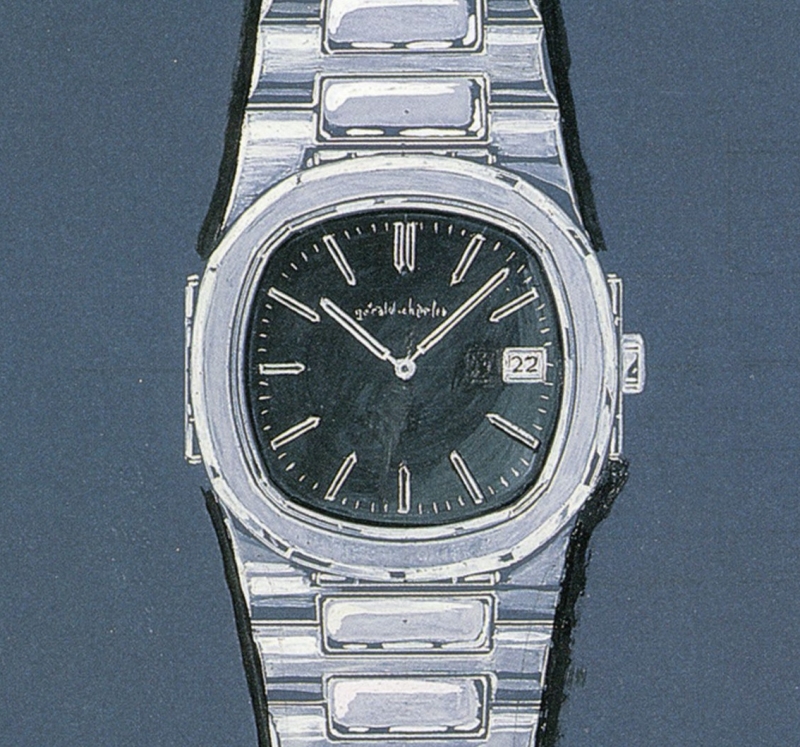
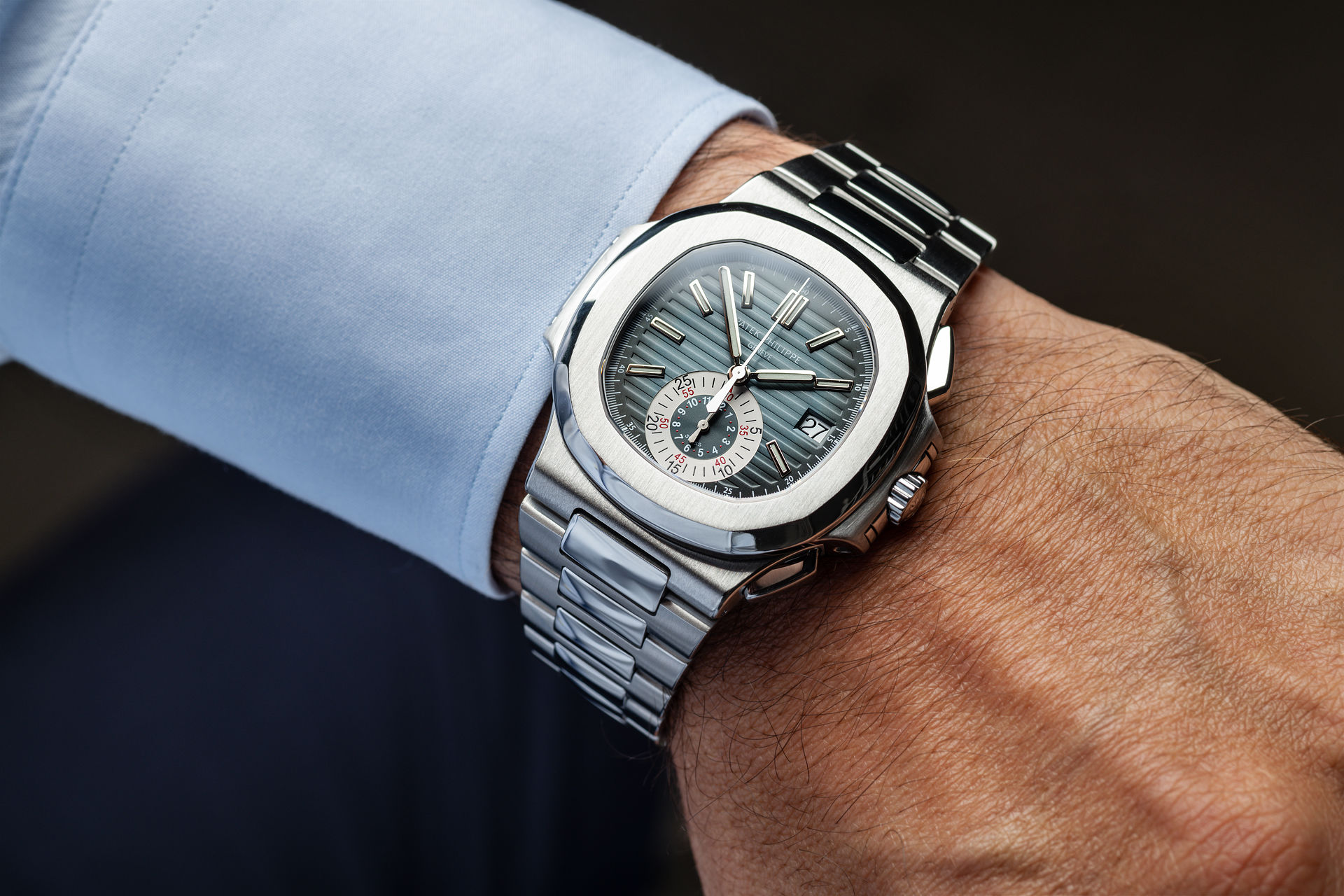
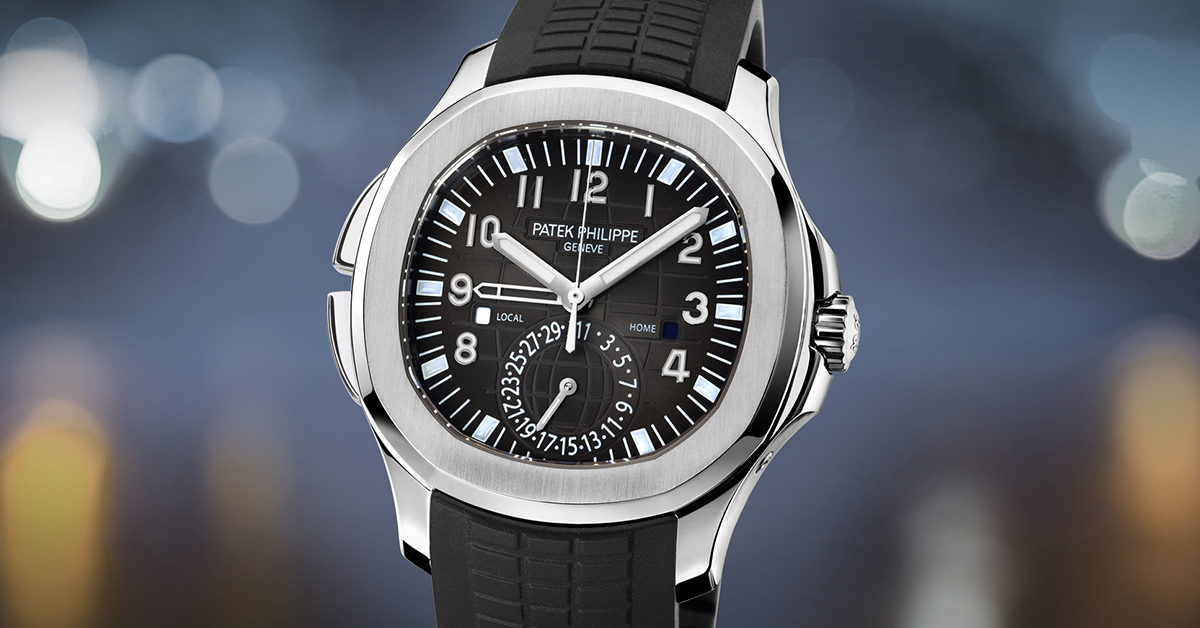
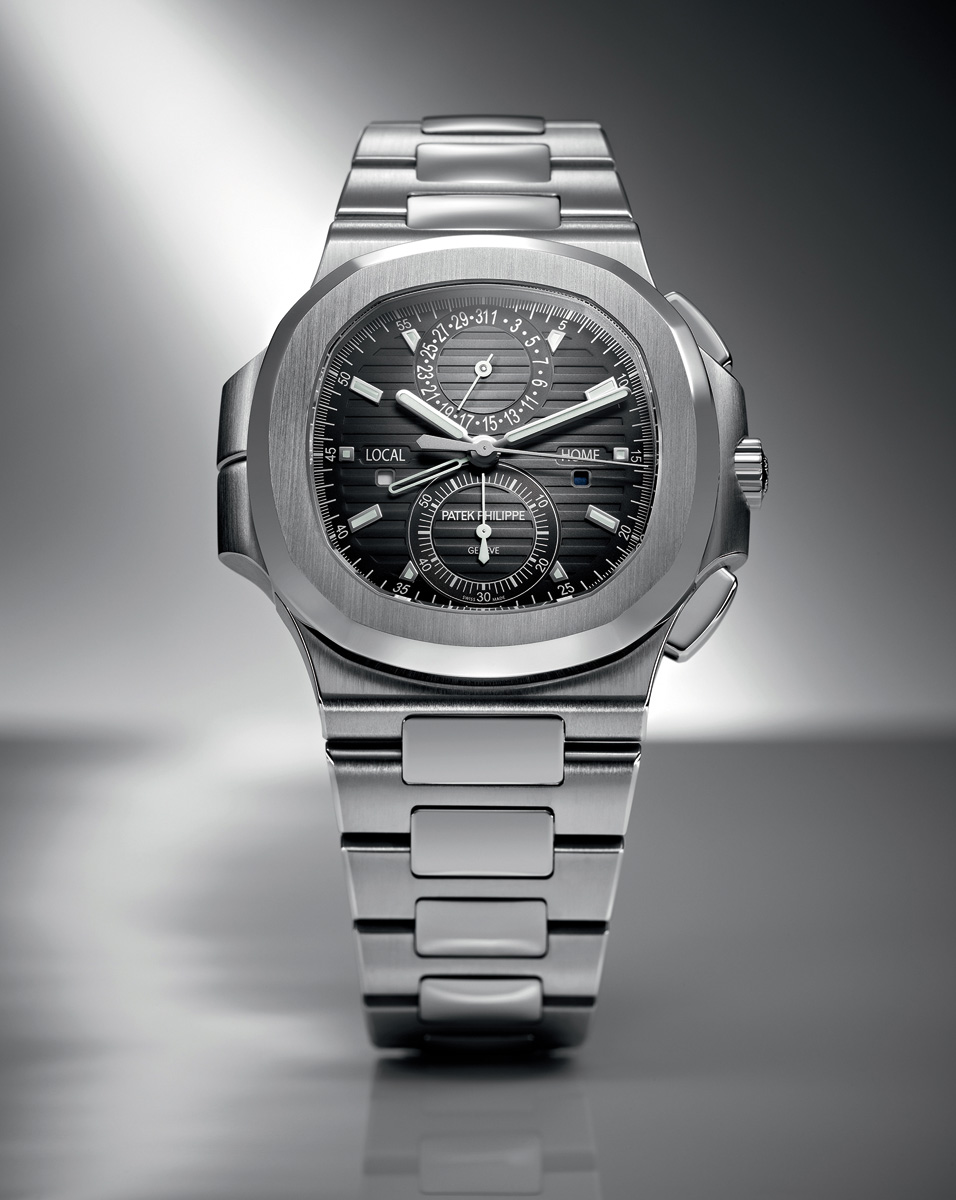
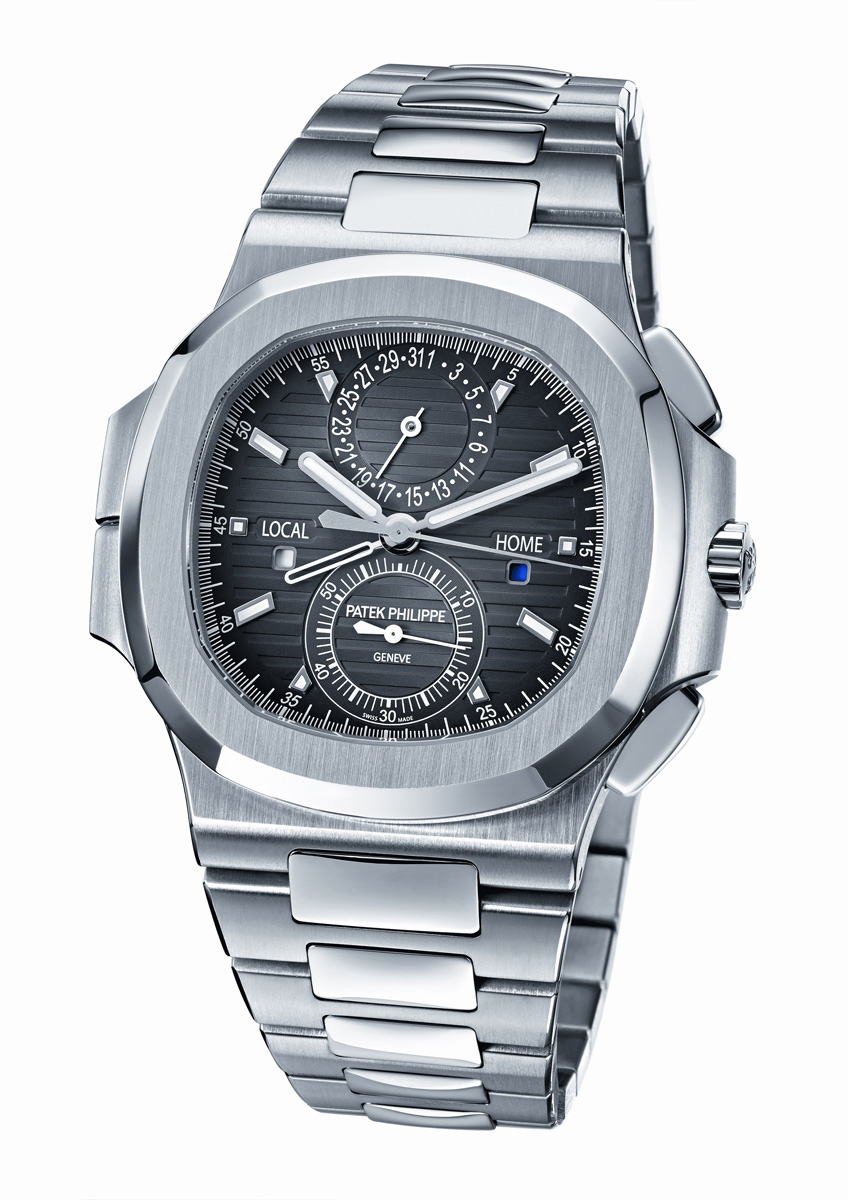
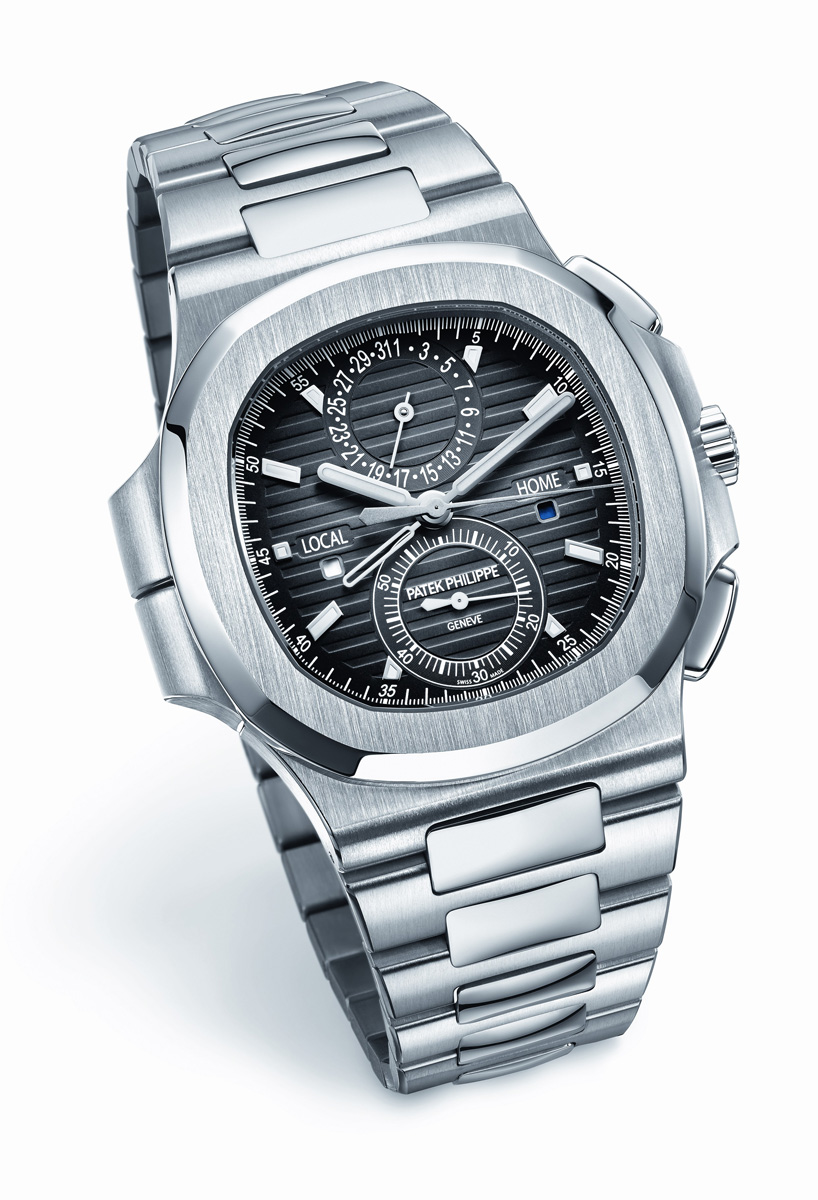
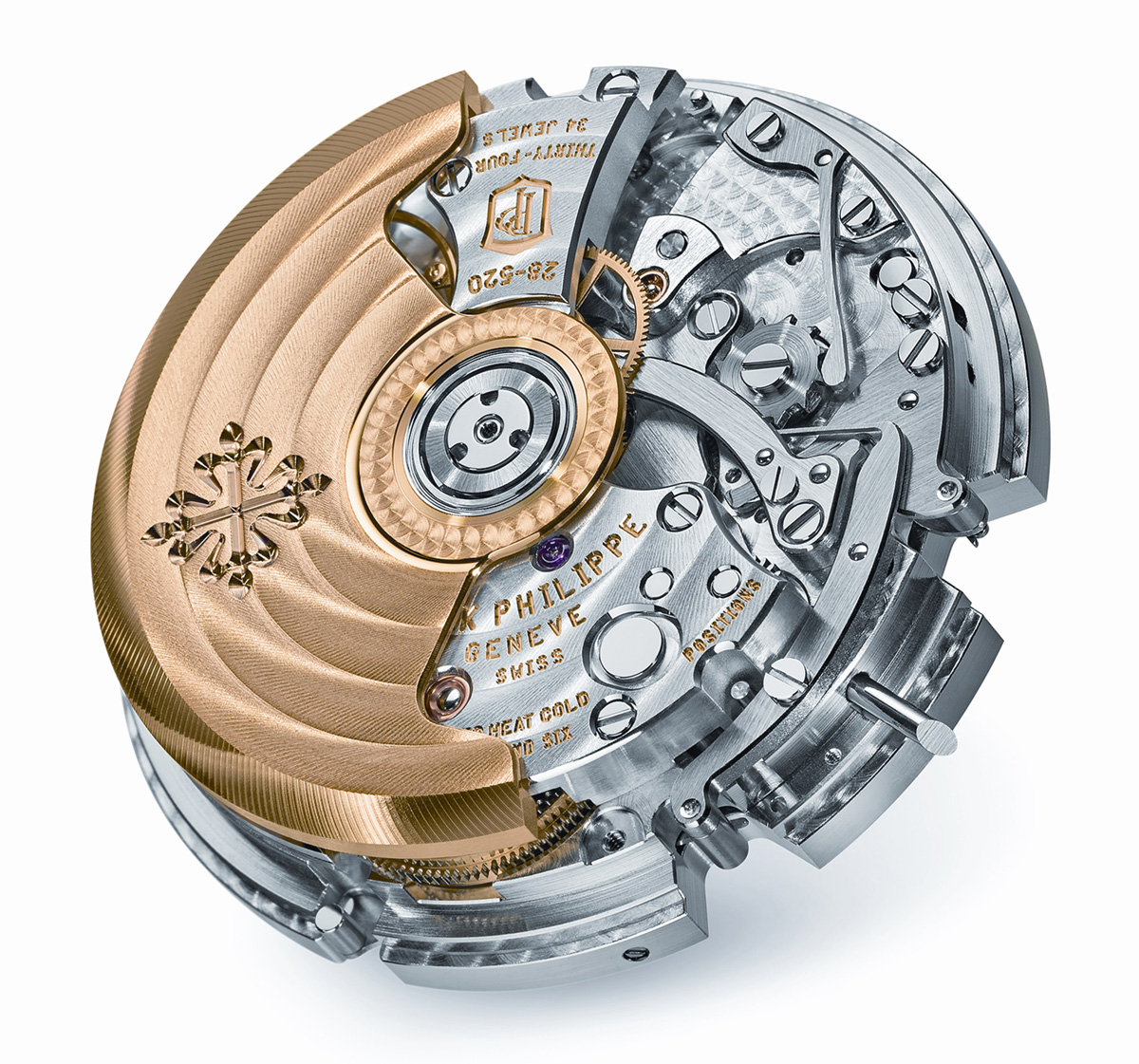
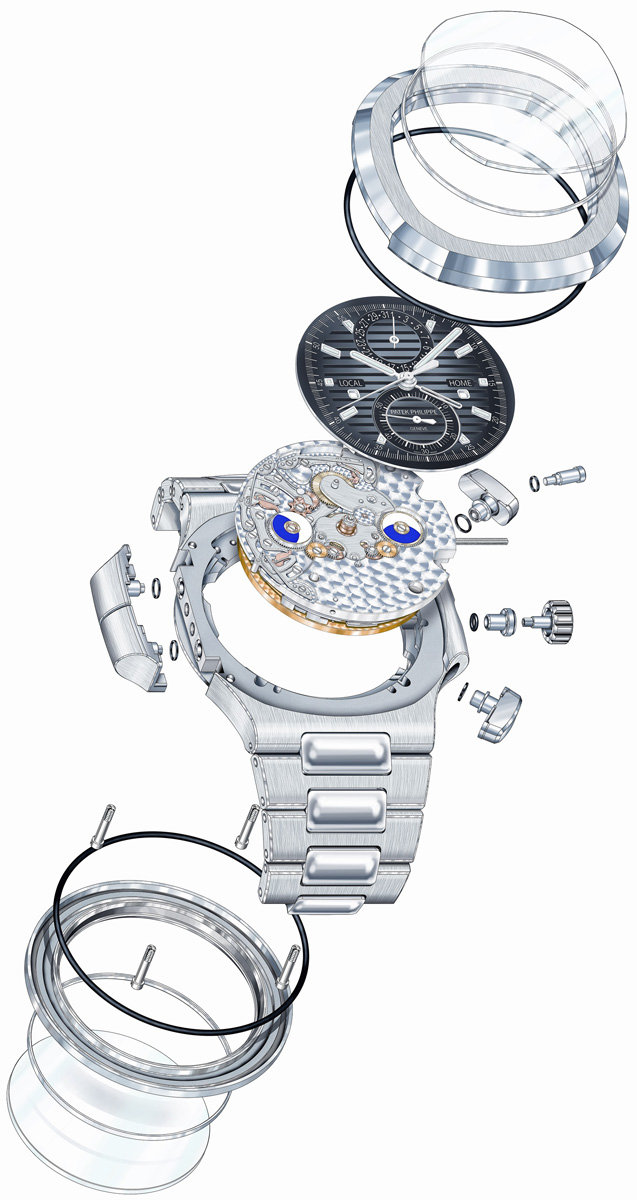
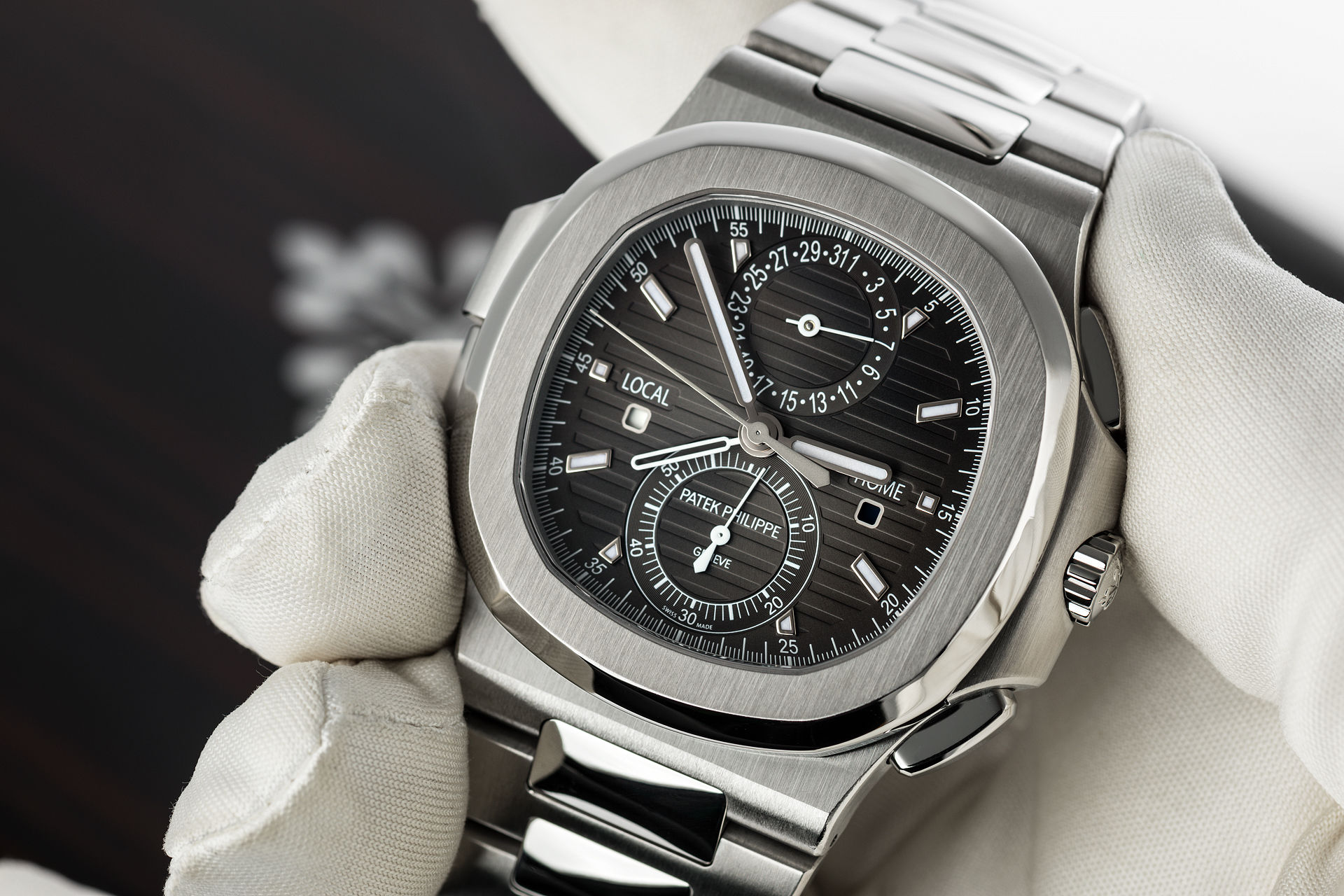
Hi Tom,
Do you know if the Nautilus is made in a white gold? Also, would you know what the 5990 gold blue dial is worth New in the aftermarket as well as preowned?
Thanks,
Hank
Hi Hank,
As far as I’m aware the Ref 5990 Nautilus has never been made in white gold. In terms of pricing for the rose gold model with blue dial, I have seen silly amounts – i.e. US$400k+. I have to be honest though and say I don’t think too many models are selling at that price…